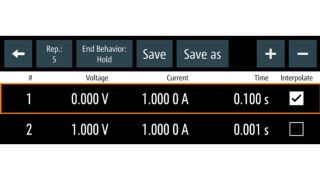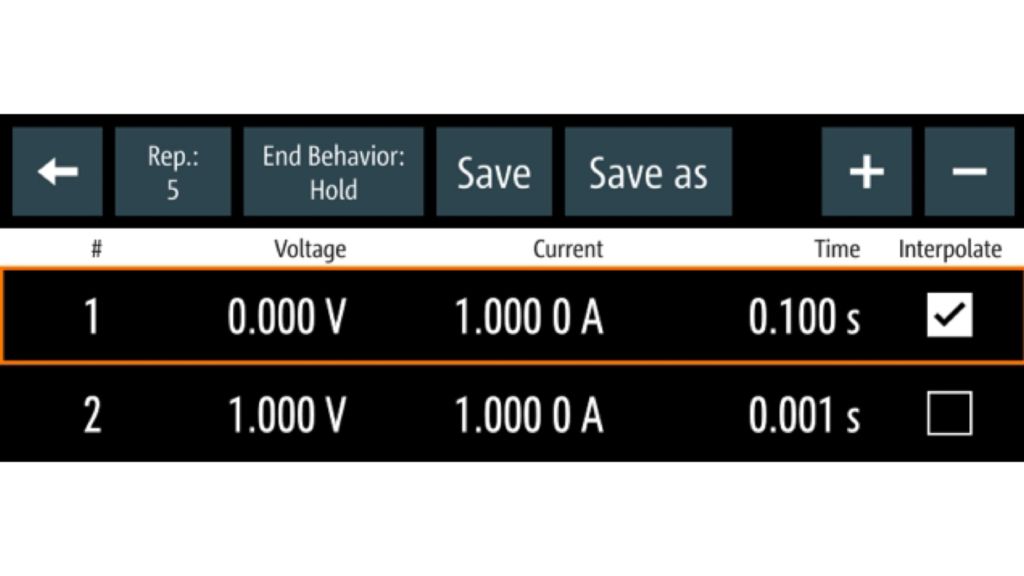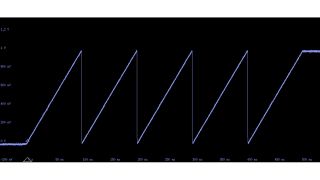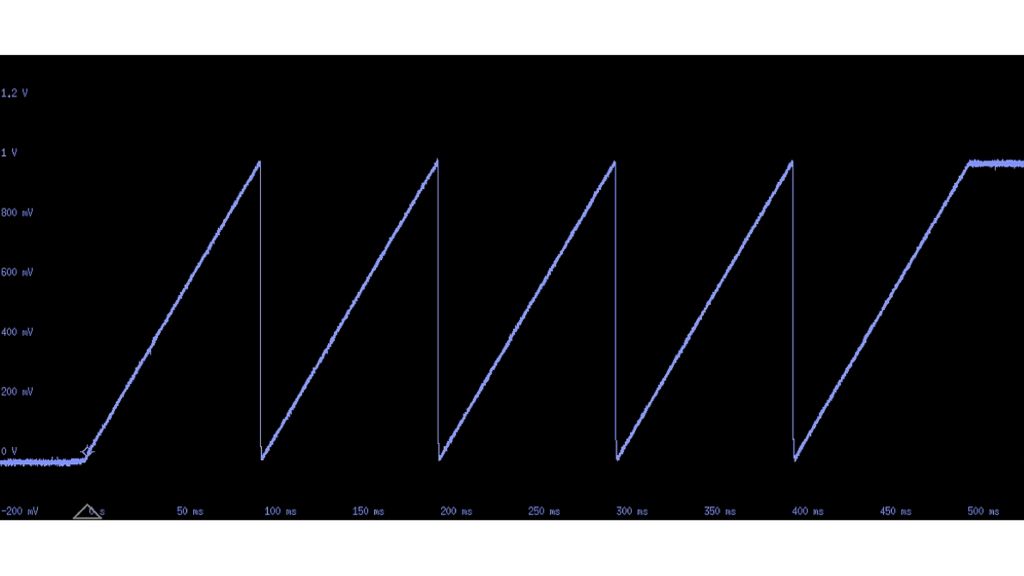Your task
Modern circuitries require different voltage and/or current levels in different operating states. For instance, simulating a startup sequence of an embedded system requires specialized voltage and current profiles synchronized across several channels.
Rohde & Schwarz solution
Rohde & Schwarz power supplies feature a free built-in arbitrary waveform generator (Except R&S®HM7042-5). It allows you to easily generate and customize your voltage and current levels over time as needed in your application. For example, this makes it possible to perform battery charge/discharge tests and simulate simple TTL signals. Further examples are listed on the next page.
You can program a new pattern directly in the on-screen menu of the power supply or load a .CSV file that can conveniently be compiled using, for example, Excel. In addition, you can program the points via SCPI. Patterns spanning several channels can also be generated by loading individual patterns in each channel of a multiple output power supply.For each step of the pattern, you can set voltage, current, duration and interpolation. The interpolation setting makes it possible to automatically interpolate the values between two data points. The various models have different ranges for programmable voltage, current, dwell time, number of repetitions and number of data points. The table on the next page summarizes these specifications for Rohde&Schwarz power supplies.
For specific testing needs, you can advance to the next step of the pattern on a trigger event.


Example of the QuickArb editor interface in the R&S®NGM200 power supply series. It is set up for five repetitions of a ramp function forming a sawtooth waveform. At the end it is set to hold the last value by selecting the corresponding end behavior.


Output of the pattern programmed above
The versatility of the arbitrary waveform generator makes a wide range of applications possible.
Square and rectangular waves
Among the most basic patterns are square and rectangular waves. They are described by switching the voltage and current between two fixed levels.
Square waves are very versatile; they can be used to test the durability of a DC motor or to emulate TTL signals. In combination with the high power levels of the power supplies and a variation of the voltage, they enable applications such as pulse plating.
Ramp
A ramp changes the voltage or current linearly from one value to another.
While the standard capabilities of the channels allow you to ramp-up the voltage, building the ramp using the arbitrary function provides further possibilities. For example, this functionality also makes it possible to ramp-down a channel or to control the current or introduce disturbances during the ramp.
Sine waves
Sine waves follow the basic mathematical sin(x) function. The main use case of a sine wave on a power supply is to emulate oscillations, but it can also be employed to drive magnetic coils. If either the amplitude or the frequency is modulated in addition, they can be employed to drive pulse width modulated (PWM) systems.
Sawtooth waves
Periodically repeated ramp functions result in a sawtooth or triangle pattern. The most common applications are vertical and horizontal deflection signals as they occur when rastering a surface.
Pulse or glitch
A pulse is a signal with a given amplitude for a short duration. If the duration is approaching 0, it is called a glitch. These signals can be employed to simulate circuit anomalies in digital designs.
Combination
The combination of basic waveforms and/or the arbitrary definition of shapes allows you to adapt the possibilities of the power supply to your specific need.
In addition, on models with more than one channel, combinations across channels can be programmed. For example, this can be bit patterns or even slow I/Q data streams.
Summary
The arbitrary waveform feature included in Rohde & Schwarz power supplies allows you to simulate device behaviors and often replaces basic standalone arbitrary waveform generators in your applications.












